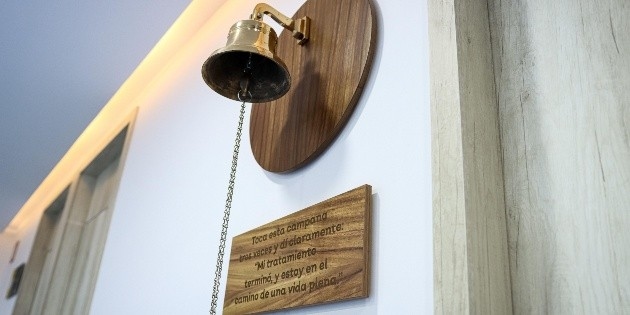This therapy could revolutionize cancer treatment in Latin America.

Esteban Sánchez, head nurse of the Oncology Unit at Barros Luco Hospital in Chile, highlights the effectiveness of subcutaneous therapies for treating people with cancer.
During his speech at the Roche Press Day in Mexico City, the specialist explained that subcutaneous administration of certain oncology drugs represents an effective and more humane alternative to traditional intravenous administration , reducing hospitalization time, optimizing resources, and improving the patient experience.
"Today we know that changing the route of administration does not mean losing therapeutic efficacy. Evidence shows that several drugs for breast cancer and lymphomas maintain the same results when administered subcutaneously ," he stated.
From her experience in a public hospital, Sánchez put a human face to this transformation by telling the story of Ana, a 57-year-old Chilean woman with breast cancer , who must travel for hours to receive intravenous treatments that can last between three and six hours.
With the subcutaneous route, he explained, the same procedure can be administered in five to ten minutes , allowing him more time for his personal and family life.
"Can we change their lives? Yes," he affirmed with conviction. " Less time in the hospital means more life . Sometimes we think innovation means adding technology, but it's also about giving them more time for a hug or to take care of a grandchild," he said.
He explained that changing the route of administration of certain treatments from intravenous to subcutaneous offers several benefits.
First, it maintains therapeutic efficacy with greater operational efficiency , as studies show that this approach does not compromise medical outcomes. Furthermore, it drastically reduces administration time to just 5 to 10 minutes, improving the patient experience and freeing up space in often overcrowded public hospitals.
In his unit, the change has freed up more than 1,800 chemotherapy chairs in one year, optimizing resources and allowing more patients to be treated. Operating costs have also been reduced—up to 50% per cycle—by requiring only a syringe and needle instead of the supplies needed for intravenous injections.
He also noted that in a system where healthcare professionals face risks such as burnout and compassionate stress, these innovations also ease the burden on the medical team.
" Listening to the patient, putting them at the center, and simplifying their experience is also a powerful way to innovate ," he noted.
Finally, Sánchez considered that this modality opens the possibility of decentralizing cancer care by facilitating the application of therapies in local units and even in homes, especially in remote regions.
" Humanizing also means simplifying . Listening to the patient must be the central axis of innovation. Because when we change the path, we truly change lives," he concluded.
* * * Stay up to date with the news, join our Whatsapp channel * * *
OB
informador




